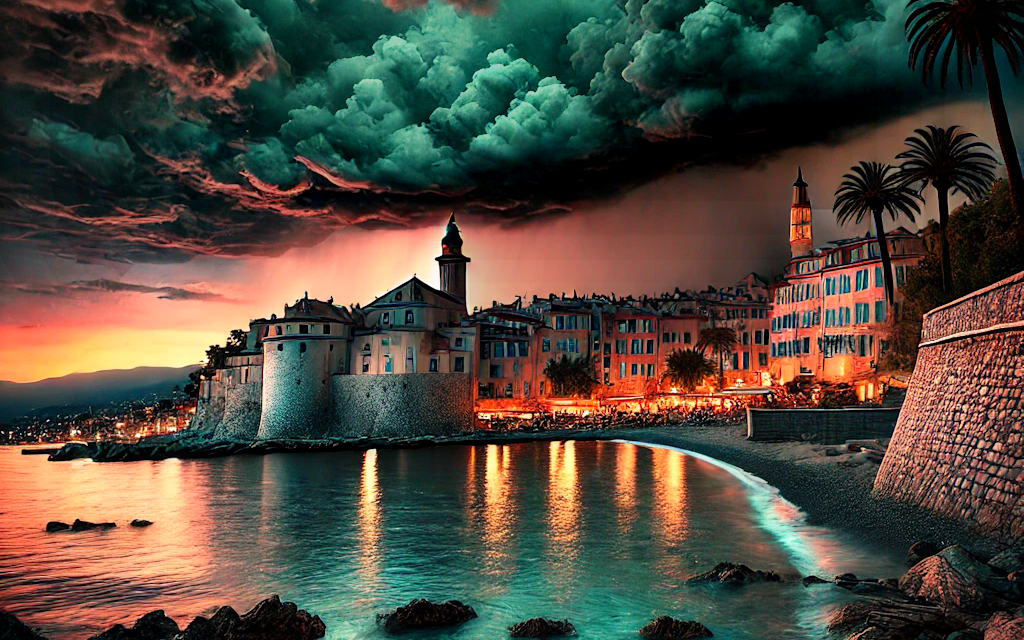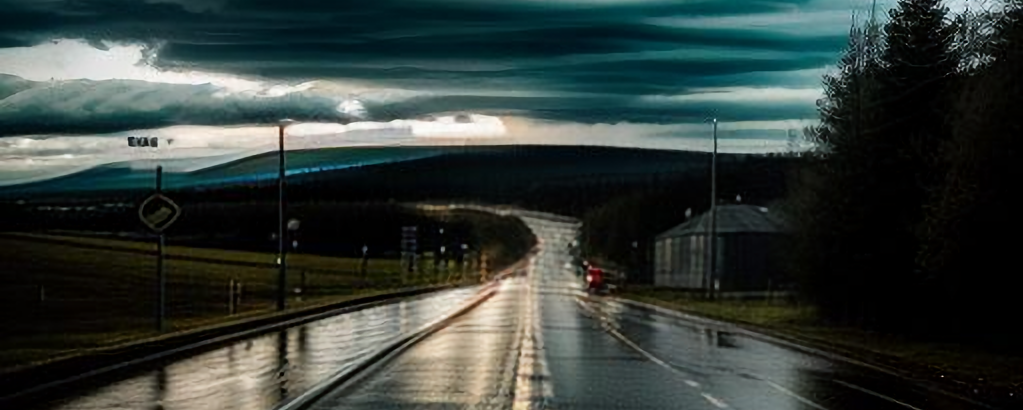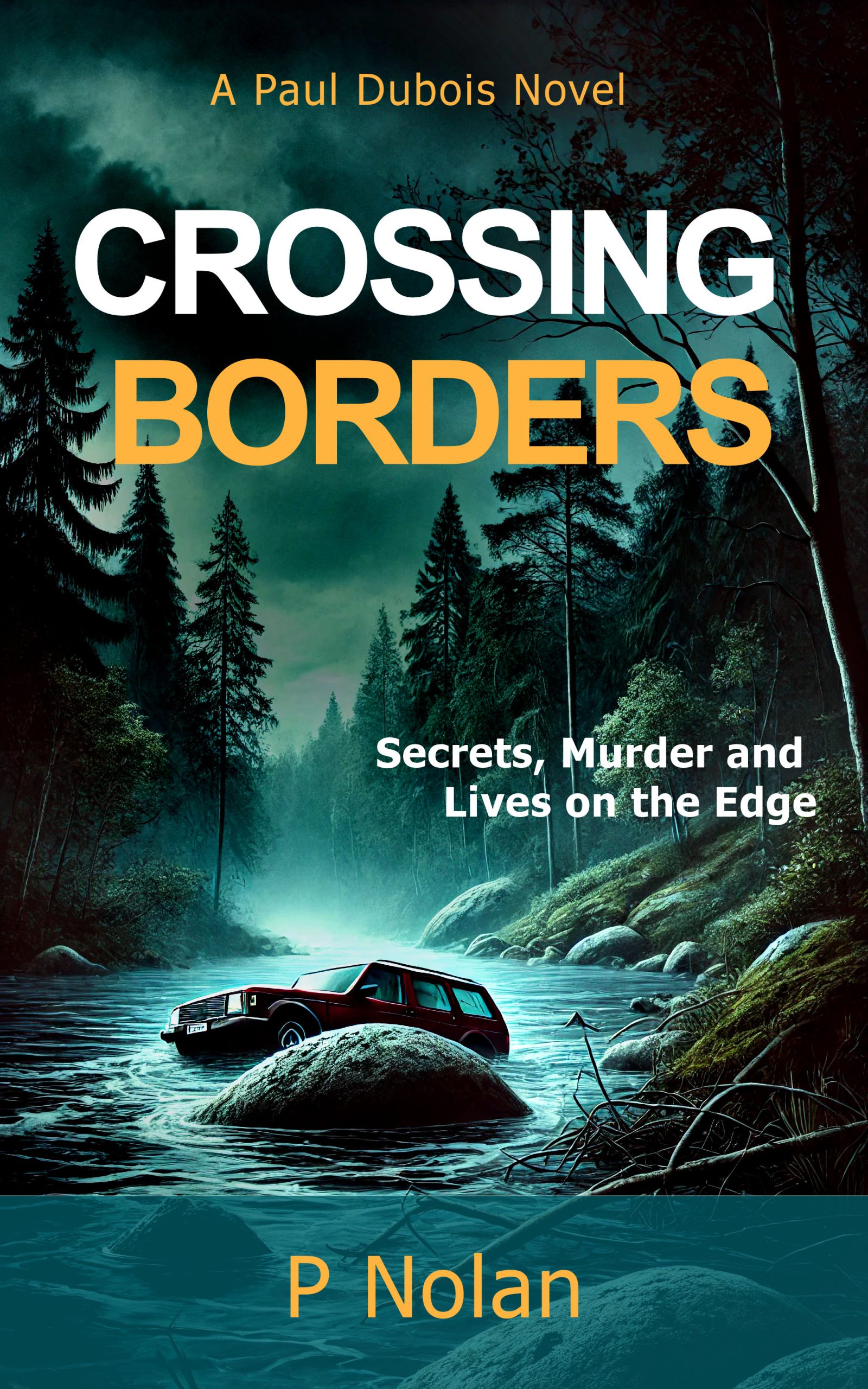Crossing Borders
Available on Amazon: eBook & Paperback
This is the first book, in the triology about detective Dubois.
A car plunges into the icy depths of the Tarn River, shattering the silence of the French countryside. The impact is brutal. Water surges in, climbing the driver’s legs like a predator. The engine sputters, then dies. Darkness closes in.
Was it a tragic accident—or the beginning of something far more sinister?
For an English couple settling into quiet retirement, the crash is just the first tremor of something bigger. Their lives become entangled with two desperate young men, hiding a family of illegal immigrants in a remote forest cabin. As crime and violence spread through the valley, choices grow sharper, morality blurs, and danger tightens its grip.
Lieutenant Paul Dubois, from the local police, fights to unravel the secrets before the valley claims more victims. But in a world where borders—both physical and moral—are constantly shifting, survival demands sacrifice. Who will risk everything? And who will be left behind?
A pulse-pounding thriller of fate, deception, and the fine line between justice and survival.
About this book
Crossing Borders is the captivating first volume in P. Nolan’s trilogy, weaving a narrative that marries fiction with true crime amidst the striking backdrop of southern France. Inspired by actual events, this novel introduces Lieutenant Paul Dubois, a tenacious investigator navigating the shadows of the French countryside to uncover the chilling truths behind a series of mysterious events.
The story plunges readers into the heart of the Tarn Valley, a region as beautiful as it is haunting, where the serene landscapes conceal deep secrets. The narrative follows Dubois as he unravels a complex tapestry of human trafficking, a dramatic car accident, moral dilemmas, and cultural clashes that transcend several borders. Through vividly drawn characters and evocative settings, P. Nolan crafts a suspenseful, atmospheric tale that explores the dark undercurrents of rural life and the fragility of human connections.
Perfect for fans of intricate mysteries, richly detailed settings, and morally complex storytelling, Crossing Borders is an unforgettable start to a series that blurs the line between crime fiction and reality.
Background
Immigrants Coming to France:
France is one of the top destinations for immigrants in Europe, hosting approximately 10% of its population as immigrants. The primary reasons for migration include employment opportunities, family reunification, and asylum seeking, with many migrants originating from Africa, the Middle East, and Eastern Europe.
Immigrants Crossing the Channel to England:
The English Channel remains a focal point for illegal crossings, often by small boats. In 2023, over 45,000 individuals crossed the Channel seeking asylum or better opportunities in the UK. Migrants typically transit through France, staying in makeshift camps like those in Calais, before attempting the perilous journey.
Illegal Migration Networks in France:
Organized crime plays a significant role in smuggling migrants through France and across borders. These networks exploit individuals, often subjecting them to harsh conditions and high risks during transit, as highlighted in *Crossing Borders*.
British Citizens Moving to France:
An estimated 150,000 to 200,000 British nationals reside in France permanently, many seeking a slower pace of life in the countryside, attracted by affordable property and a focus on quality of life. Popular regions include Dordogne, Provence, and Occitanie.
Spanish Nationals Relocating to France:
Approximately 75,000 to 100,000 Spanish nationals live in France, many drawn by historical ties between the two countries, economic opportunities, or family connections. The Pyrenees region often serves as a cultural and geographical bridge.
French Immigration Policies and Challenges:
France’s immigration system is strict, requiring visas and adherence to EU regulations. Despite these measures, informal migration persists, particularly along the borders with Spain and Italy, where crossings are more porous.
Historical Context of Immigration Between Spain and France:
During the Spanish Civil War (1936–1939), hundreds of thousands of Spanish refugees fled to France, leaving a legacy of migration routes and familial connections that persist today.
Cross-Border Dynamics in the Tarn Region:
The Tarn Valley, where the novel is set, serves as a symbolic and logistical link between northern Spain and southern France, making it a key route for illicit trade and migration.
Migrant Detention Centers in France:
France operates several detention centers for undocumented migrants. These facilities, often criticized by human rights groups, highlight the tension between humanitarian obligations and immigration enforcement.
10. **Economic Contributions of Immigrants**:
Both legal and undocumented migrants play a crucial role in sectors like agriculture, construction, and domestic work in France, mirroring themes of exploitation and survival explored in *Crossing Borders*.
Albi, a UNESCO World Heritage Site, is renowned for its stunning red-brick architecture and the iconic Sainte-Cécile Cathedral. It served as a hub of the Cathar religious movement, making it a site of significant historical and cultural intrigue. The region’s rich medieval history and architecture reflect the tension and power struggles of southern France.
The Tarn River, which winds through the region, is central to its identity. Its serene beauty contrasts with its potential for danger, especially during flooding, as depicted in *Crossing Borders*. The river and surrounding valleys create a striking natural setting that is both tranquil and mysterious—perfect for a crime thriller.
Extract
“The car plunges into the icy maw of the Tarn River, and the impact throws the driver against the steering wheel with great force. A blinding moment of chaos follows as the world spins, a cacophony of shattering glass and splintering metal.
The Tarn River, usually a serene ribbon winding through the valley, has become a raging torrent. Days of relentless rain have swollen the river, turning it into a wild beast that crashes and thrashes against the banks. Surrounding the river, the forest stands tall and imposing, a dark labyrinth of twisted trees. Its gnarled branches claw at the overcast sky, casting long shadows that seem to stretch and reach for the water below.
The water floods the cabin, its icy fingers creeping up the driver’s legs. The engine sputters and dies.
Dark waves churn, foaming and frothing, ready to drag anything in their path into the depths below. The air is heavy with the smell of damp earth and rotting leaves, mingling with the cold, sharp scent of fear.
The rain falls in steady sheets, soaking the ground and blurring the line between land and water, reality and nightmare. Every drop seems to whisper secrets of the past, hinting at tragedies buried deep within the earth.
Every instinct scream for escape, but the pressure of the water holds fast, a relentless grip that turns the car into a tomb.
A few meters from the bank, two figures stand hidden in the shadows, their presence an unsettling contrast to the wildness around them. A man in a dark coat glance nervously at his companion. An anxious energy suggests he doesn’t belong here. The second figure, dressed in a heavy jacket, looks more at ease with the chaos, but his sharp features are set in a cold expression. He watches the car, now half-submerged, as the currents toss it about like a discarded toy. The unsettling reality dawns on them both—there is no sign of life inside. The shape of the driver remains motionless against the steering wheel as the water rises, swallowing the vehicle piece by piece.
The two men stand frozen, the weight of their inaction settling like a heavy stone in their stomachs. What should they do? The thought lingers in the first man’s mind, but as he gazes at the car, he knows they cannot intervene. The risk of exposure is too great. They have their own project to finish and can’t let the unfolding tragedy overshadow it. It would jeopardize their own operation. With a chill running down his spine, the first man shifts nervously, hesitating to reach out, but the other’s cold gaze holds him back.“
The True Crime behind the Story
Spoiler Alert:
The True Crime That Inspired Crossing Borders
Crossing Borders draws inspiration from the infamous Affaire Robert Lund, a true crime case that gripped both France and the UK with its chilling twists and international intrigue. While the novel is a work of fiction and takes creative liberties, it captures the dark undercurrents of human behavior and moral ambiguity that echo this real-life story.
The case centers on Robert Lund, a British expatriate living in southern France with his wife, Evelyn, in the idyllic Tarn region. Their seemingly picturesque life unraveled in 2011 when Evelyn’s body was discovered in a ravine near their home. The investigation revealed a complex web of secrets, including financial troubles, allegations of infidelity, and a history of tension between the couple.
Robert Lund quickly became the prime suspect. French authorities charged him with Evelyn’s murder, pointing to inconsistencies in his account and circumstantial evidence linking him to the crime scene. However, Lund maintained his innocence, claiming Evelyn had fallen to her death during a walk. The case raised questions about cultural and judicial differences, as Lund faced trial in a foreign legal system.
Ultimately, the case captured widespread attention due to its international dimensions, the psychological complexity of its characters, and the haunting setting of the Tarn region. It remains a source of fascination and debate, with unresolved questions about motive and culpability.
For Readers Who Want to Know More (Spoiler Warning)
[Wikipedia: Affaire Lund (in French)]
[BBC : Coverage of the Case]
These sources delve into the full details of the case but may spoil aspects of the novel’s suspenseful narrative.
Proceed with curiosity and caution!
Buy Now
Kindle Edition:
Paperback:

Smells Like Blood
In Smells Like Blood, the explosive finale of the Dubois Trilogy, the glamorous streets of Antibes conceal a brutal underworld of drug trafficking and violence. When a young student is murdered, the investigation exposes a vast network of criminal activity stretching from the French Riviera to the mountains of Morocco.
This high-stakes thriller dives into the violent realities of the drug trade, where young lives are torn apart by psychological manipulation, ruthless rivalries, and deadly power struggles. As the hunt for the culprits intensifies, the story reveals the dark connections between local communities and global trafficking networks.
Thank You Page
Now that you’re part of my mystery-loving community, here’s what you can look forward to in your inbox:Exclusive Freebies,Special Offers and Sneak Peeks & Behind-the-Scenes InsightsAs a valued subscriber, you’ll get access to free short stories, bonus chapters,...

Thematic Influence on P Nolan’s Work
P. Nolan’s writing style is a unique blend of the atmospheric tension characteristic of Nordic Noir and the evocative cultural backdrop of France. Drawing inspiration from crime fiction greats like Jussi Adler-Olsen, Jo Nesbø, Stieg Larsson, and French author Fred...
